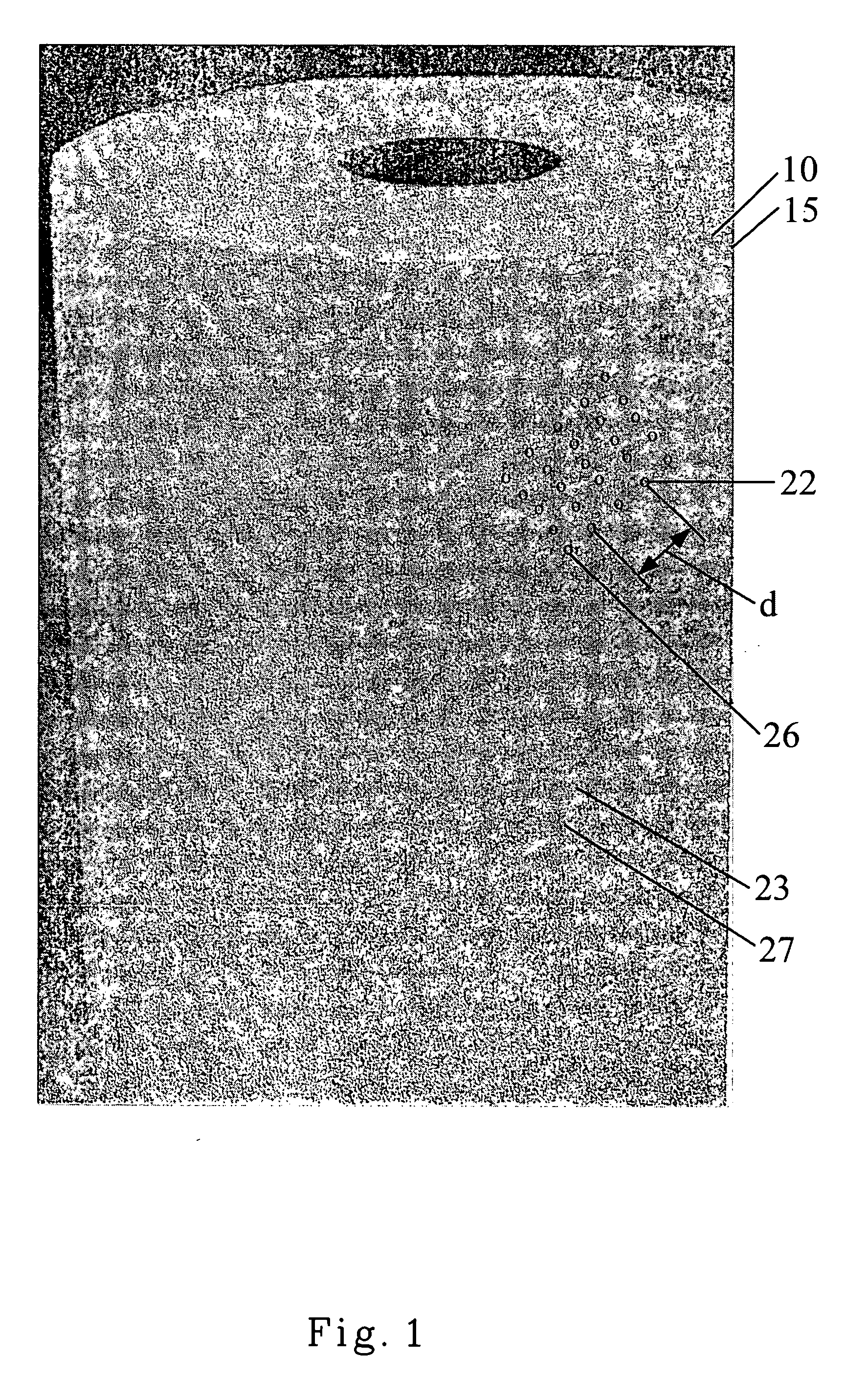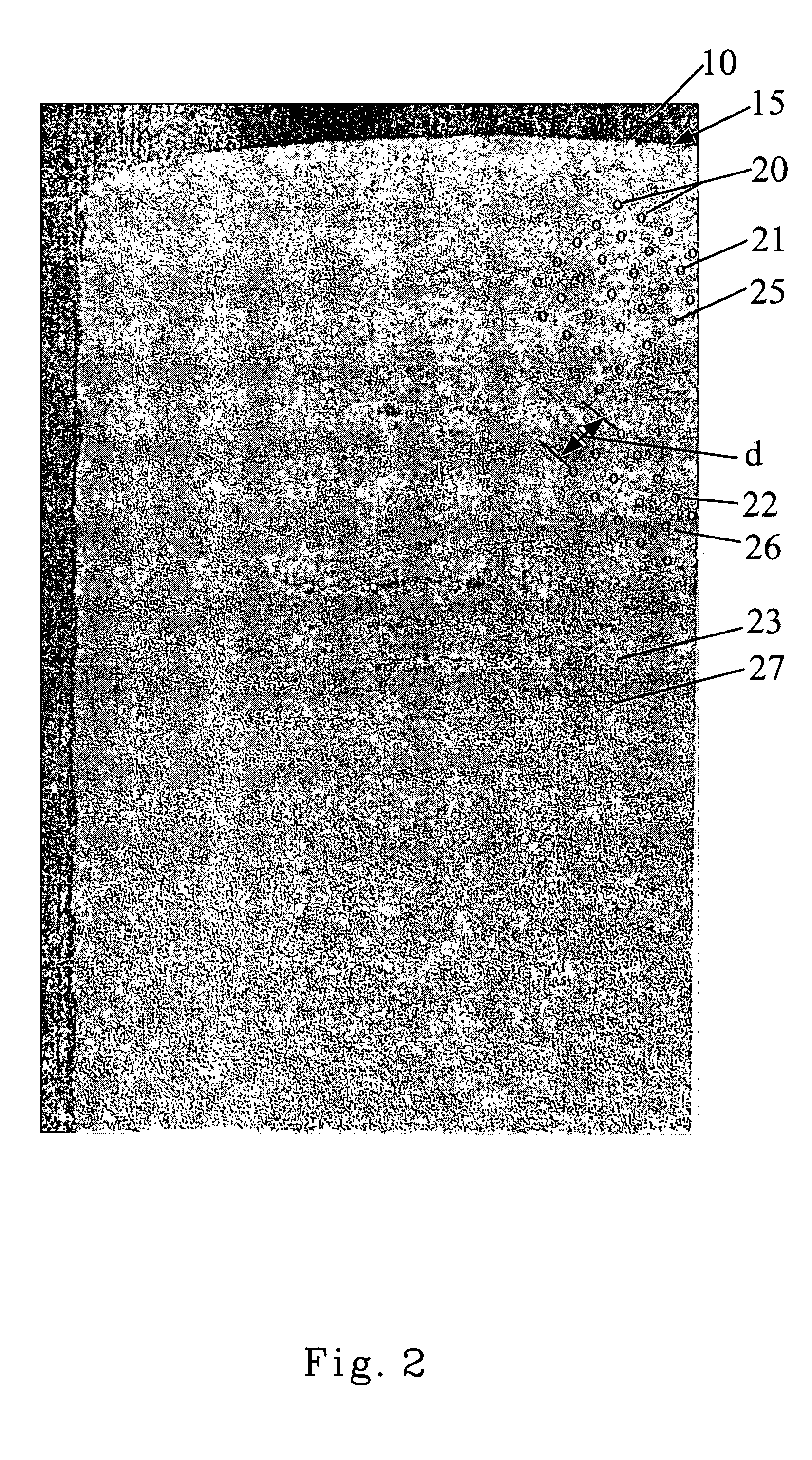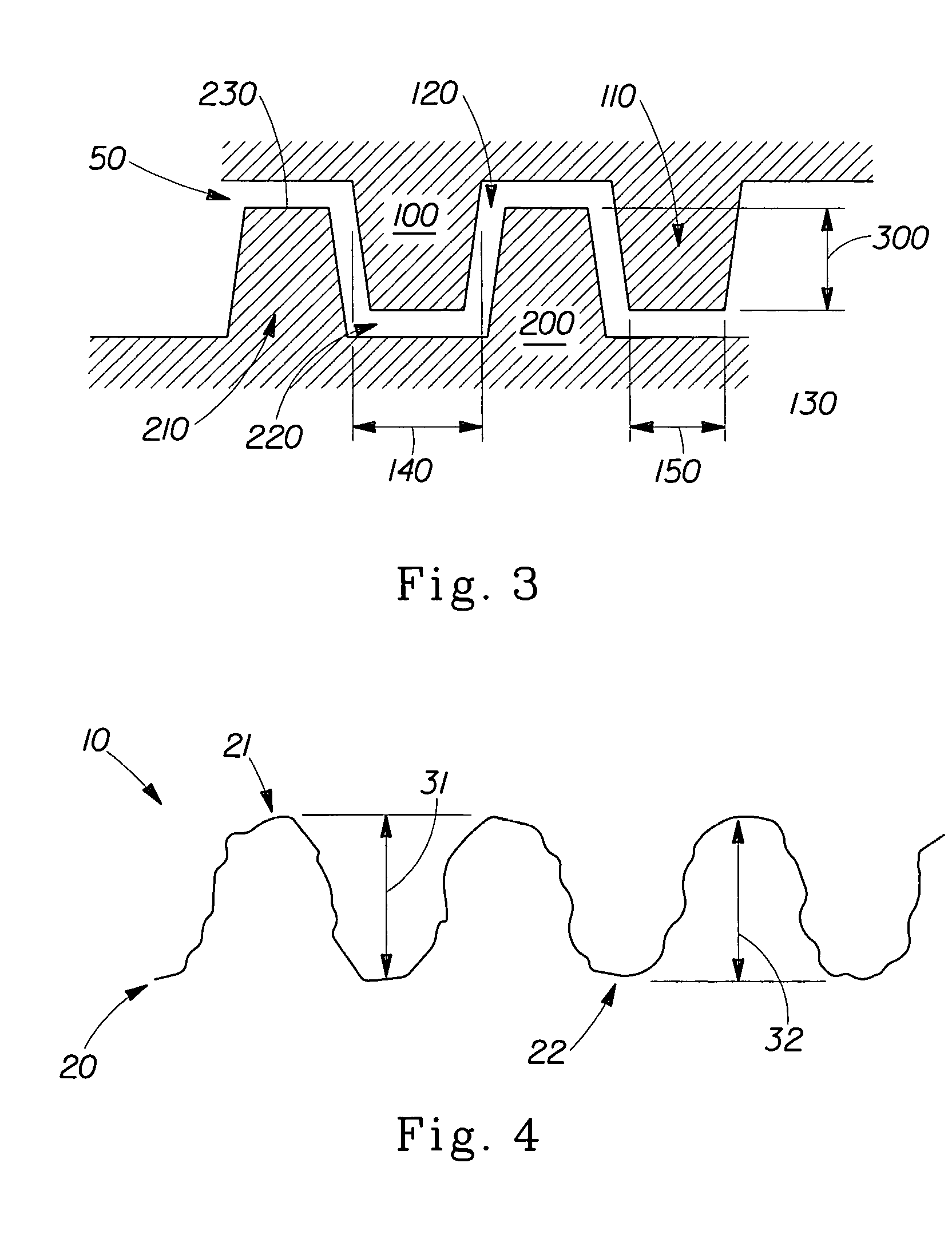Deep-nested embossed paper products
a deep nested, embossed paper technology, applied in the direction of patterned paper, non-fibrous pulp addition, luminescent/fluorescent substance addition, etc., can solve the problems of tissue paper being less soft and less absorbent than expected, and tissue products having less than desirable softness and absorbency detract significantly from the acceptance of the produ
- Summary
- Abstract
- Description
- Claims
- Application Information
AI Technical Summary
Benefits of technology
Problems solved by technology
Method used
Image
Examples
embodiments
Embodiment 1
[0052] One fibrous structure useful in achieving the embossed tissue-towel paper product is the through-air dried (TAD), differential density structure described in U.S. Pat. No. 4,528,239. Such a structure may be formed by the following process.
[0053] A pilot scale Fourdrinier, through-air-dried papermaking machine is used in the practice of this invention. A slurry of papermaking fibers is pumped to the headbox at a consistency of about 0.15%. The slurry consists of about 65% Northern Softwood Kraft fibers and about 35% unrefined Southern Softwood Kraft fibers. The fiber slurry contains a cationic polyamine-epichlorohydrin wet strength resin at a concentration of about 25 lb. per ton of dry fiber, and carboxymethyl cellulose at a concentration of about 6.5 lb. per ton of dry fiber.
[0054] Dewatering occurs through the Fourdrinier wire and is assisted by vacuum boxes. The wire is of a configuration having 84 machine direction and 78 cross direction filaments per inch,...
embodiment 2
[0059] In another preferred embodiment of the embossed tissue-towel paper products, two separate paper plies are made from the paper making process of Embodiment 1. The two plies are then combined and embossed together by the deep nested embossing process of Embodiment 1. The resulting paper has an embossment height of greater than 1000 μm, an Embossment Height to Loaded Caliper of greater than 1.45, an Initial Compressibility Ration of greater than 25, and an Absorbent Capacity of greater than about 21.3 gram per gram.
embodiment 3
[0060] In another preferred embodiment of the embossed tissue-towel paper products, three separate paper plies are made from the paper making process of Embodiment 1. Two of the plies are deep nested embossed by the deep nested embossing process of the Embodiment 1. The three plies of tissue paper are then combined in a standard converting process such that the two embossed plies are the respective outer plies and the unembossed ply in the inner ply of the product. The resulting paper has a embossment height of greater than 1000 μm, an Embossment Height to Loaded Caliper of greater than 1.45, an Initial Compressibility Ration of greater than 25.
PUM
| Property | Measurement | Unit |
|---|---|---|
| height | aaaaa | aaaaa |
| embossment height | aaaaa | aaaaa |
| embossment height | aaaaa | aaaaa |
Abstract
Description
Claims
Application Information
 Login to View More
Login to View More - R&D
- Intellectual Property
- Life Sciences
- Materials
- Tech Scout
- Unparalleled Data Quality
- Higher Quality Content
- 60% Fewer Hallucinations
Browse by: Latest US Patents, China's latest patents, Technical Efficacy Thesaurus, Application Domain, Technology Topic, Popular Technical Reports.
© 2025 PatSnap. All rights reserved.Legal|Privacy policy|Modern Slavery Act Transparency Statement|Sitemap|About US| Contact US: help@patsnap.com



